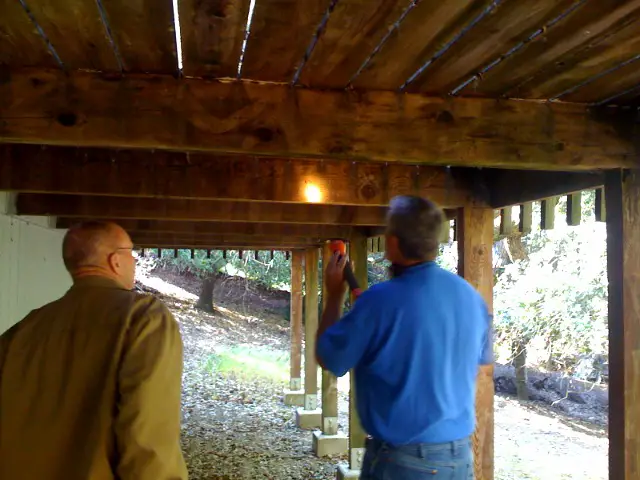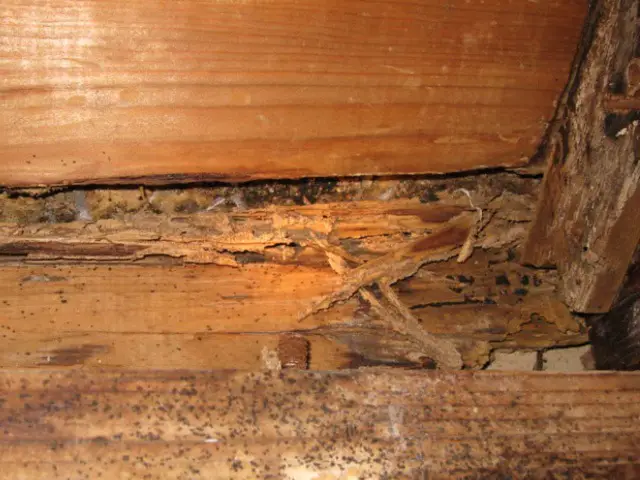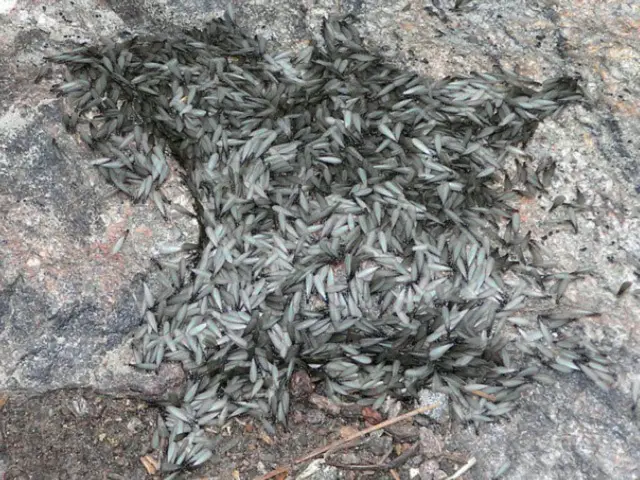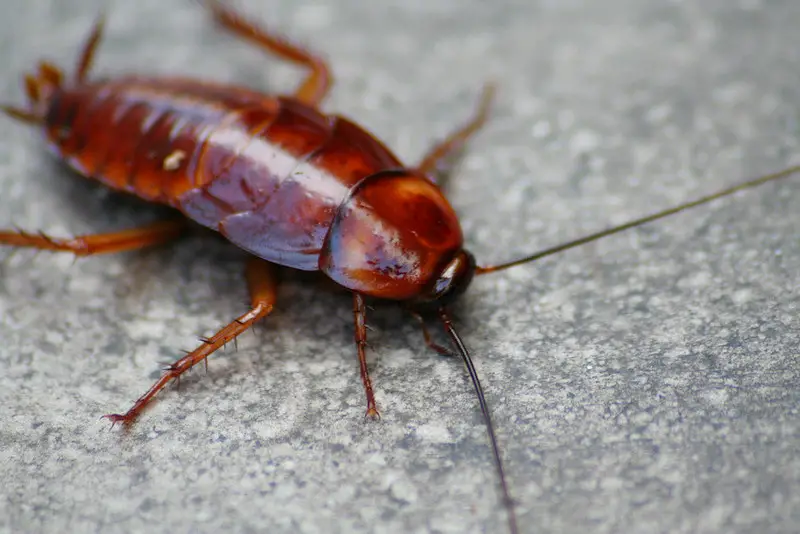Ants are a nuisance inside your home, but they can be just as damaging outside of the house. But how do you get rid of ants that are already outside? If you have children or pets, you want to avoid using any chemicals to get rid of ants in the yard or anywhere outside for safety reasons. Ant control chemicals seem like a quick fix; they are extremely harmful if consumed or ingested. To avoid potential problems with using dangerous chemicals, opt for a natural solution that will get rid of your ant infestation problem.
If you want a natural method for getting rid of ants outside, fill a spray bottle with 12 ounces of water, then add about 30 drops of peppermint oil and 30 drops of lavender oil. Mix the oils with water in the spray bottle and spray the mixture directly on ants. For even better results, you should also spray the trails in which you’ve seen ants moving. Make sure that you also spray for ants along the cracks between the outside of your home and the foundation. Finally, you can add cayenne pepper to this natural ant control solution if you have a severe ant infestation outside.
This natural, safe solution will kill the ants outside once they come into contact with it. The ant control solution also prevents ants from finding the trail they used to get inside your house from outside.
How to get rid of ants outside?
When most people think about ants outside, the first reaction is to get rid of these annoying pests. Unfortunately, regardless of where you live in America, you’ll find that ants love to set up camp outside. The most important starting step in ant control and elimination is locating their natural hiding spaces. Knowing where ants hide and nest allows you to perform critical pest control and prevention tactics in spots where ants feel most at home.
Where do ants hide outside?
Common outdoor places where ants hide include:
- Damp areas – Damp spots and high humidity naturally attract ants.
- Outdoor food sources – Make sure to remove easy ant food sources to help you get rid of ants as soon as possible.
- Trash piles – Trash piles serve as a tasty food source for ants. The sooner you get rid of trash outside, the sooner you will get rid of ants outside.
- Inside tree holes – Ants like to nest inside tree holes.
- Piles of wood – If you have piles of firewood outside, you are likely to find ants there.
- Water damaged wood – Water damaged wood is a likely place to find ants.
- Flower beds – Ants can nest inside flower beds and potted plants.
- Trash cans – To get rid of ants outside is to deny ants a feast within your garbage can. Instead, make sure to use bug-proof trash cans outside to keep ants out.
- Sewage systems – It’s not uncommon to find ants and cockroaches crawling around sewage systems.
- Piles of leaves – Piles of leaves are attractive for ants. A leave pile provides protection, insulation and warmth. In addition, they make great ant hiding places.
Ants are one of the most common structural pests found in and around the home. They are attracted to many things inside and outside of your home, such as the food they can find in sugars and even wood. Unfortunately, they also find warmth and dark places to hide to grow their nest behind the walls without you even knowing—most people, before they notice a problem, may have over 10,000 ants behind the wall.
Related posts:
- How To Get Rid Of Ants in Texas?
- How To Get Rid Of Ants in Florida?
- How To Get Rid Of Ants In Ohio?
- How To Get Rid Of Ants in New York?
- How To Get Rid Of Ants In Illinois?
- How To Get Rid Of Ants In Michigan?
- How To Get Rid Of Ants in California?
- How To Get Rid Of Ants In Pennsylvania?
- How To Get Rid Of Ants In Georgia?
- How To Get Rid Of Ants In North Carolina?
- Do Sugar Ants Bite?
How to find ant nests outside?
Sometimes the solution to an outdoor ant problem is finding and getting rid of their nest. For example, if you’re dealing with a carpenter ant infestation outside, you must get rid of the carpenter ants before these pests can do structural damage to outdoor structures.
The secret to ant control outside is to find them and eliminate them fast. With a bit of detective work, you can easily find the ant nest. Ants prefer to nest in damp areas. So look for ants in soft, spongy or rotten wood or wood structures. Then, you should look for ants in and around outdoor plumbing, piles of leaves, trash cans, rain gutters, flower beds, and inside tree holes.
How to get rid of ants starts with looking for outdoor areas with water damage. Exterior walls, damaged or rotten wood, outdoor food sources are ideal ant hiding places.
When you find the nest outside, spray it and the area around it with an insecticide. Make sure to follow the instructions on the label. Next, you should remove possible ant hiding spaces. Finally, replace damaged wood outdoors. If you are unable to track down the ant nest, you might need to hire a pest control service company in your area. Professional pest control service providers spend a lot of their time hunting down pests and their nests.
How to kill ants in your yard?
A couple of ants here and there in your yard isn’t really a big concern, but anthills are eyesores. Having ants in the yard can ruin outside dining and cause pain and property damage. It’s best to get rid of anthills fast.
People generally want to kill fire ants because of their painful sting. However, if you have ever been stung by fire ants, you know that their venom produces a painful welt that can last for several days. Therefore, having fire ants on your plants can make for a painful harvest.
Carpenter ants are also unwanted yard guests. If you have them outside, the natural reaction is to get rid of them. Carpenter ants can bite. These ants have powerful jaws. After a carpenter ant bites, it will spray formic acid, causing a burning sensation.
You can easily kill a few ants if they are only in a specific area outside. For example, with an outdoor insecticide, you can spot-treat a sidewalk or firewood—alternatively, granules or liquid work well as a way to get rid of ants outside.
For large-scale ant infestations, it’s best to use a lawn and garden insect killer to get rid of ants. Before you spray the ant killer solution, mow the grass. The next step is to spray the insecticide on the entire lawn—you can also spray trees and shrubs.
For best results, spray in the early morning or late afternoon. That’s because ants are the most active early in the morning and in the late afternoon. Don’t spray if it is windy outside to prevent drift. Also, avoid spraying on rainy days. If ants are still building mounds after a month, treat outdoors again (Insecticides should work for several weeks. Check the label on the ant control product you decide to buy. The goal isn’t to kill every ant in your yard, but spraying will get rid of most of them and eliminate the annoying mounds.
Outdoor ant control
In summer, we reach the height of our wasps season. This includes wasps, hornets, ants and carpenter bees. With the increased amount of outdoor activities, including barbeques, ants, wasps and hornets have a greater abundance of food to attract them. Nests started in the spring are now fully operational and can be very frightening, especially to families with small children. Make sure that ants are included in your home protection plan.
Like wasps, ants are a prominent summer problem. The influx of ants is caused by an abundance of food and humid weather. Ants can be a problem both indoors and outdoors. That is why you need a strategy for getting rid of ants not just inside but outside too.
As other insect populations rise, such as wasps and ants, so do carnivorous insects such as centipedes and spiders. A spike in centipede and spider calls coincides with a spike in other insect populations as centipedes and spiders eat other insects such as ants. Therefore, an indication of spiders or centipedes is a good indication of other insect species being prominent in a resident.
Best ant bait for outside ant removal
To get rid of ants outside, you need to use the best ant bait. If you use the right bait, you can use scout ants to wipe out an entire colony. When you check outdoors for ants, you are most likely to see scouts ants foraging for food to carry back to the colony. You can use these scouts to wipe out the entire ant colony outdoors.
Start by prebaiting ants. Keep in mind that ants’ tastes change during the year. During the warm summer months, ants prefer fatty and oily foods. And they prefer protein during the spring. In areas of ant activity, you should set out peanut butter, fried food, sugar or honey, then see which food the ants take back to the colony. After a day or so, you will know whichever food ants prefer for bait. This is a simple DIY way to get rid of ants outside. Once you have learned what the ants like, buy and set out toxic ant bait geared to their taste. Check the label on the bait package for words like “controls both grease and sweet-eating ants.”
Use scents to remove ants outside
Where you see one ant outside, you can rest assured there are many more you don’t see. Anywhere they go, ants leave a scented trail inside and out. The scented trail is a guide for ants to follow. So if you want to get rid of ants outside, mopping or sweeping isn’t really an option to try to eliminate the scent.
A safe way to get rid of ants outside is to create a potent ant repellent. Start by mixing three parts of water with one part of white vinegar. Then spray this ant control solution wherever you’ve seen ant activity in the past. This pest control method will stop outdoor nesting ants. It will not only remove ants from outside, but it will also get rid of ants inside your house. White vinegar and water mixture is a great way to prevent ants from nesting in your yard. Unfortunately, if the ants have already made a nest outside, the only option may be to kill them with ant bait.
Carpenter Ant Information
The Carpenter ant (Camponotus pennsylvanicus) is a social insect. They live in colonies. Carpenter ants, unlike termites, do not eat wood; carpenter ants tunnel and make nests in softwood. They prefer to nest in wet wood, but any wooden areas (porch, tree, veranda, step, door, etc.) which become moist are vulnerable to carpenter ant attack. They are black in color and large in size, 8 to 11-mm in length. They are most active at night when they feed on insects, fruit, garbage and honeydew from aphids.
Carpenter Ants come in five different sizes ranging from a one-quarter inch or as large as three-quarters of an inch. All of these sizes are represented in any given nest. However, only 10% of the nest is ever visible. Most of the action happens inside the nest, behind the walls.
Carpenter Ants are a major concern for homeowners, as they are destructive pests that attack the structure of your home.
Ants are one of the most common pests found in and around the home. They are attracted to wood that has been exposed to moisture. Carpenter ants tunnel and make nests in softwood. However, they do not eat the wood. The largest of the ant family, the carpenter ant ranges from 1/4 to 3/4 inches (3/5-2 cm), has a constricted waist, bent antennae and is black, reddish-black or brownish-black in color.
Understanding the habits and life cycle of the carpenter ant can be useful in its control. For example, they are most active and cause the most damage during warm summer months.




